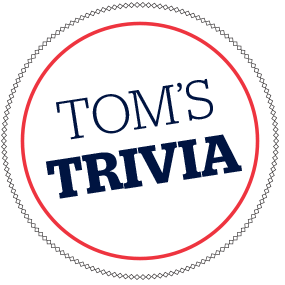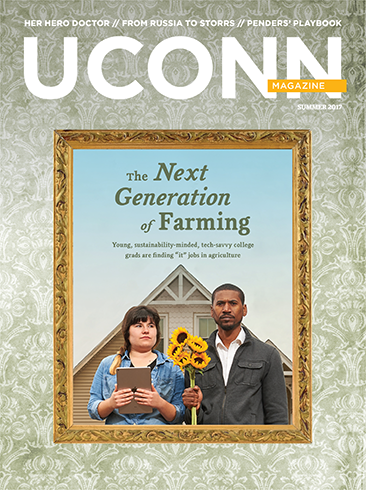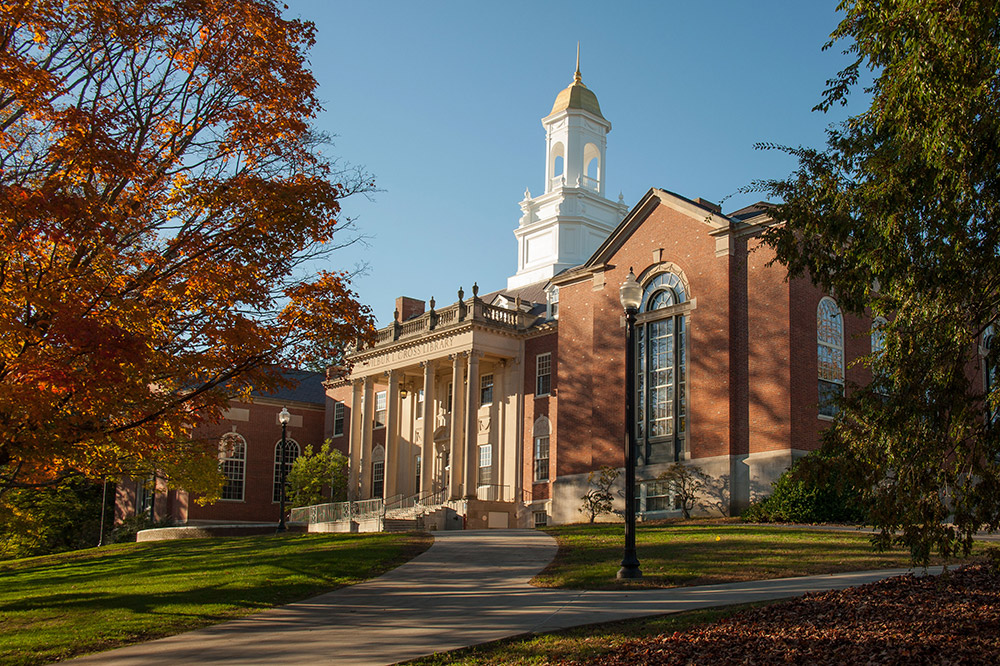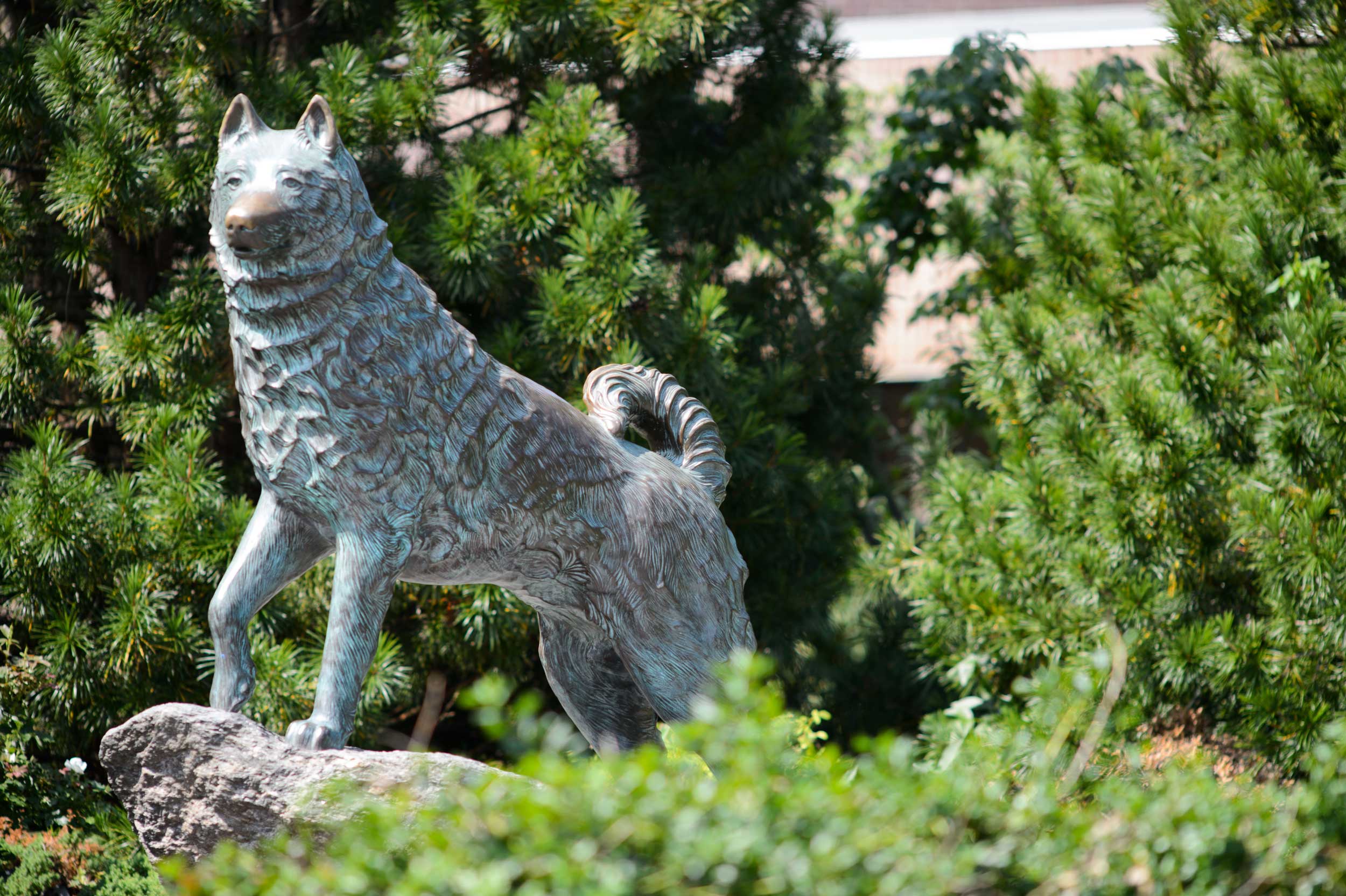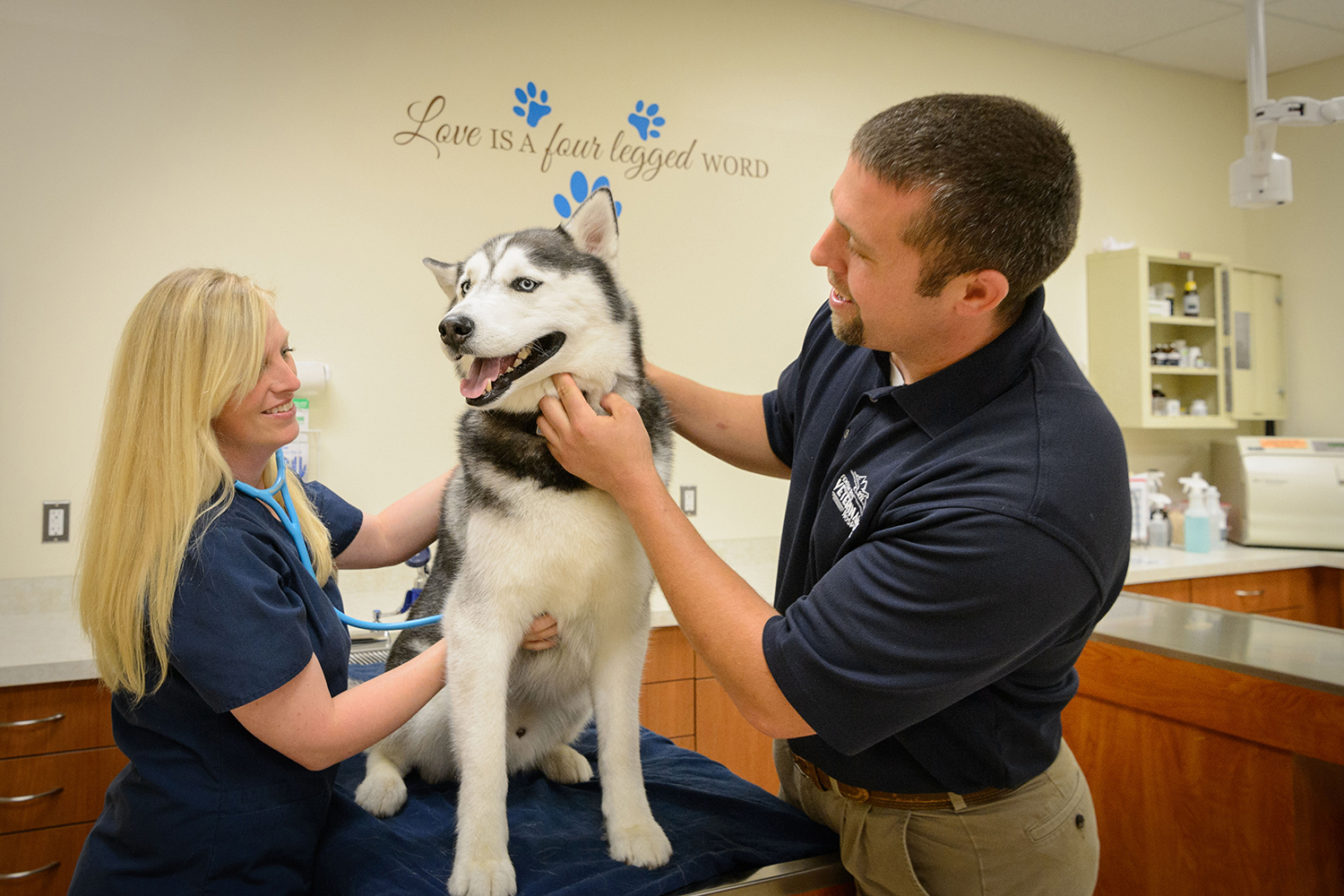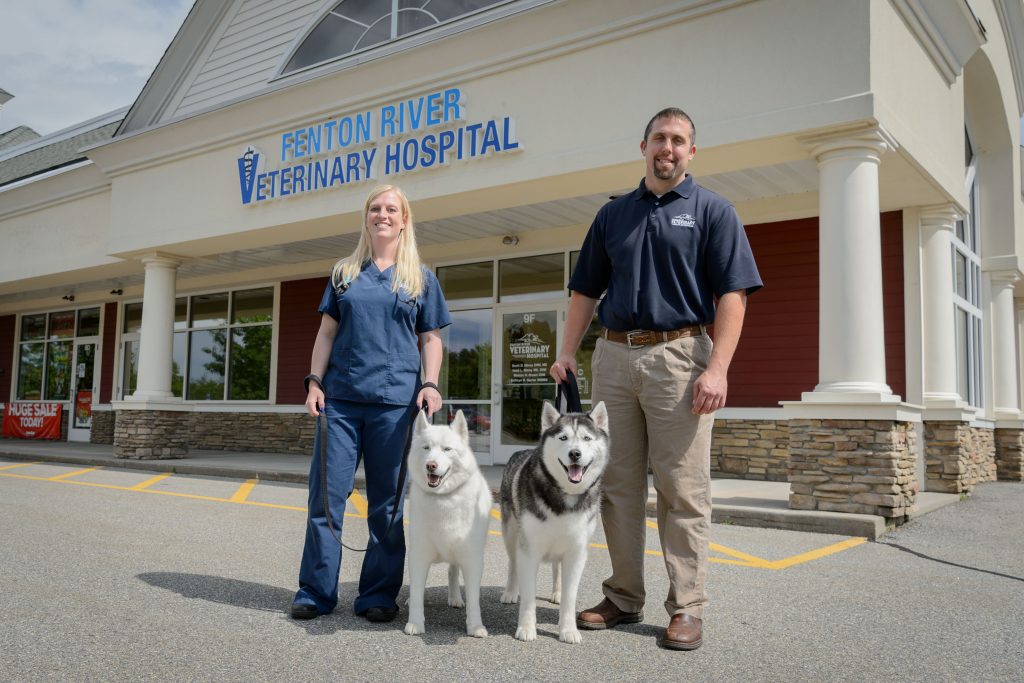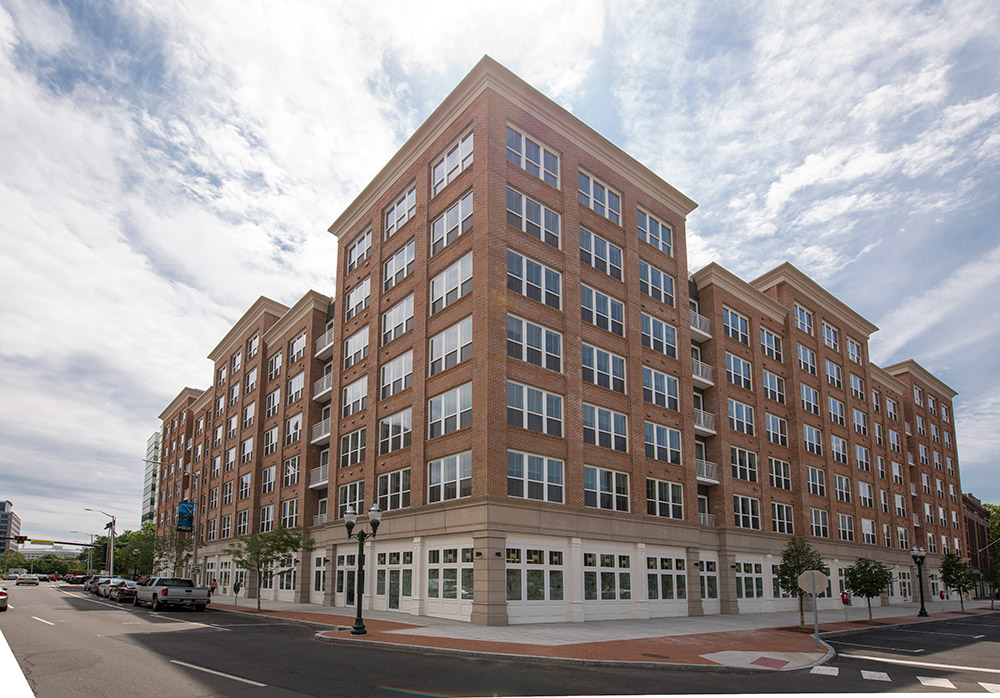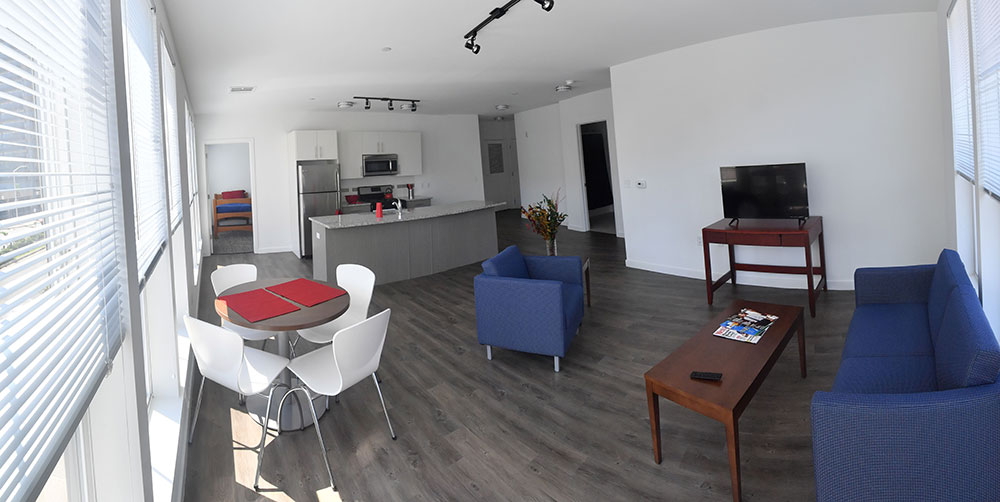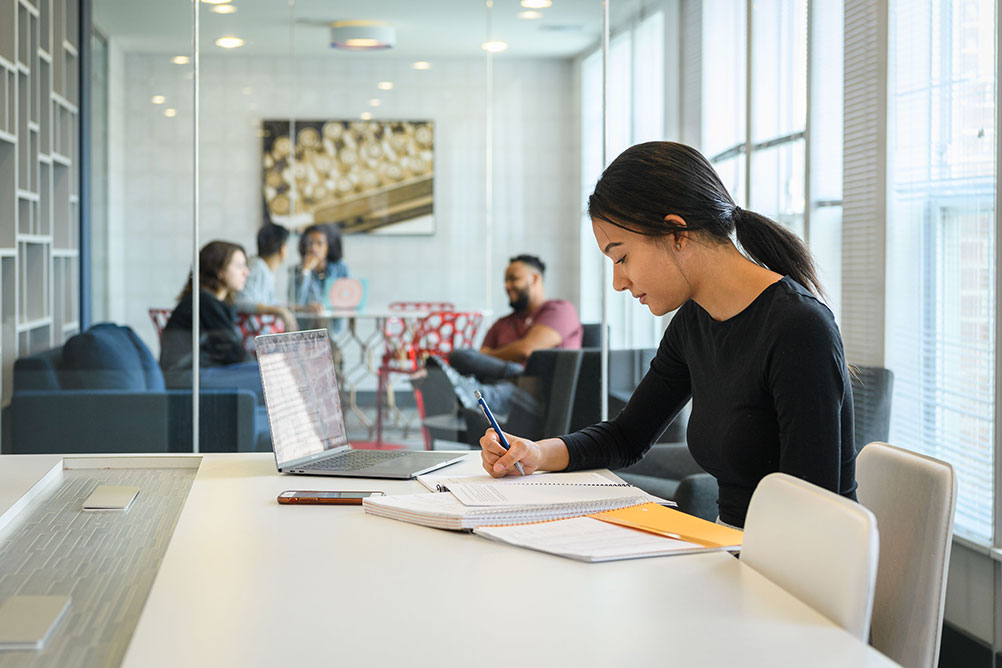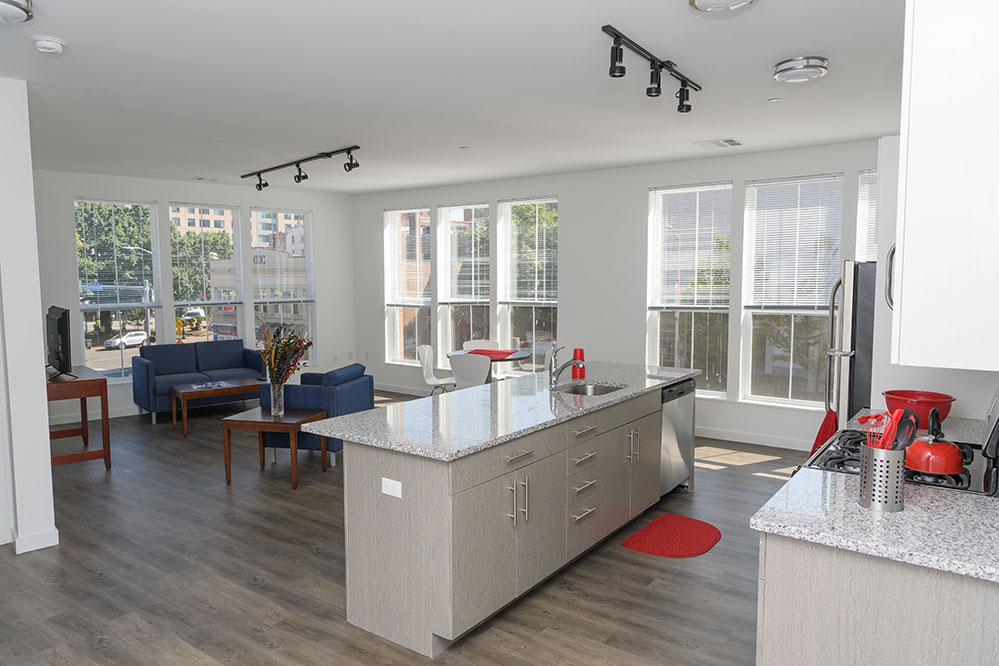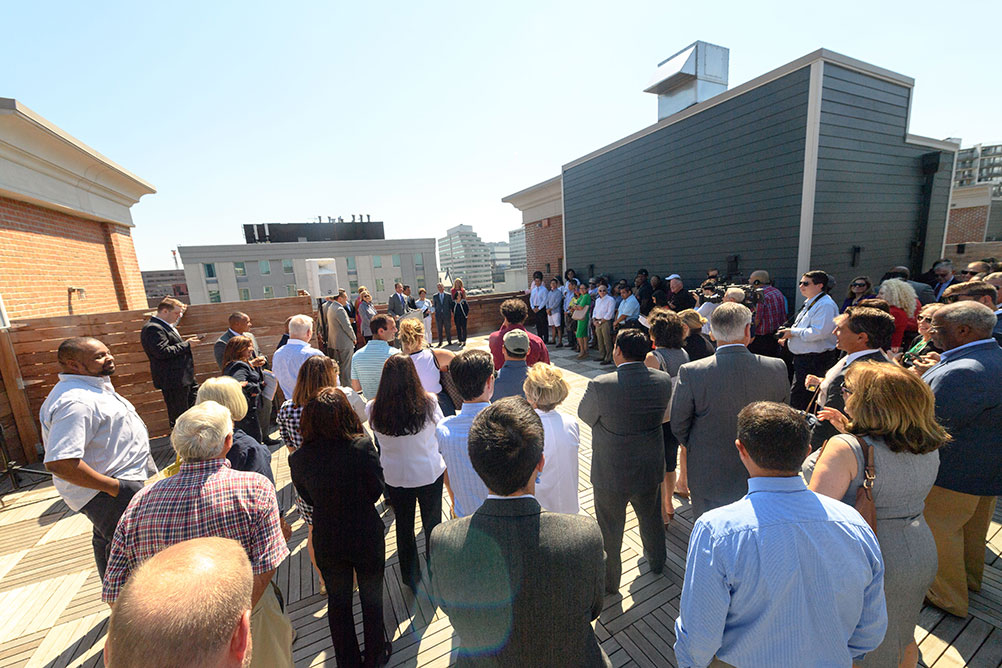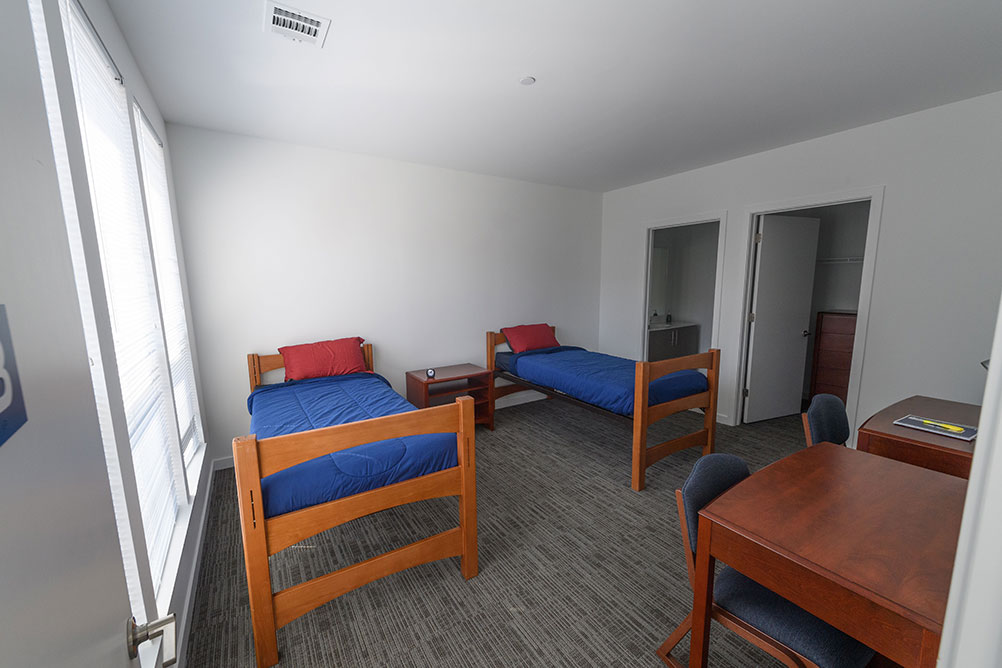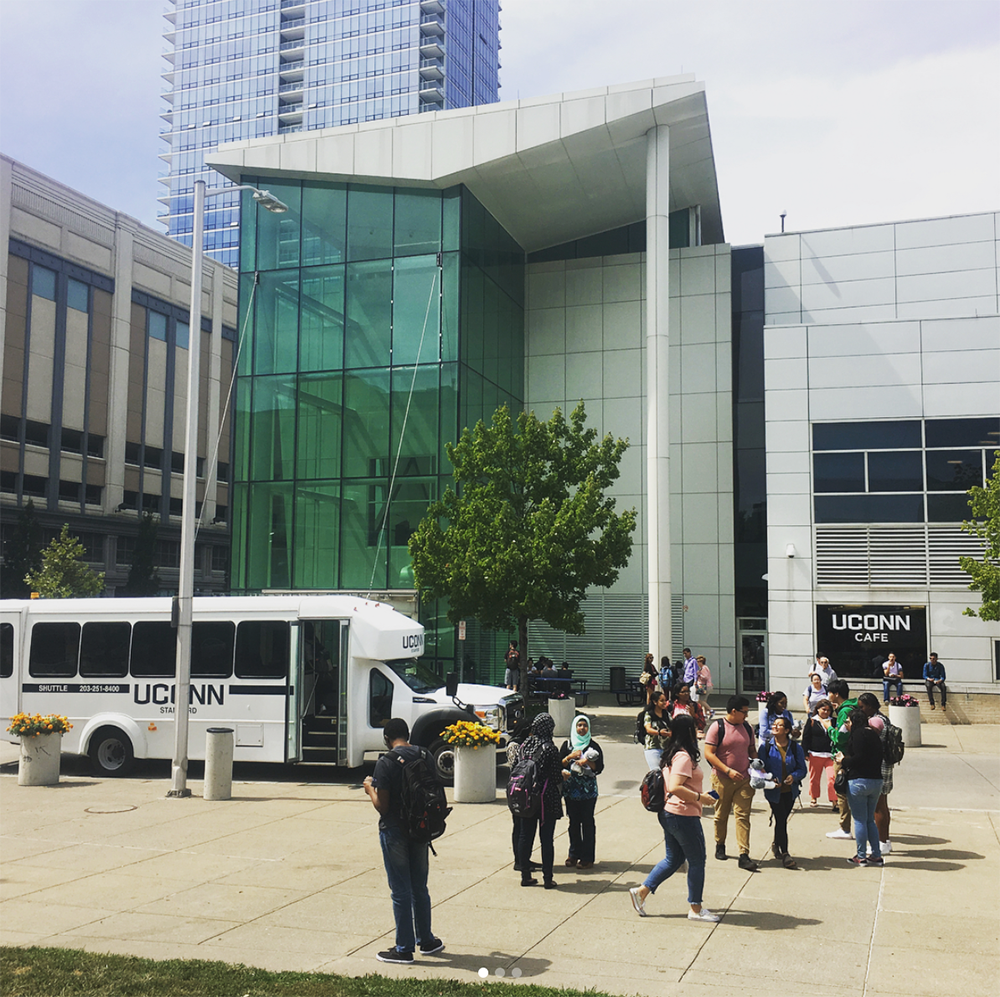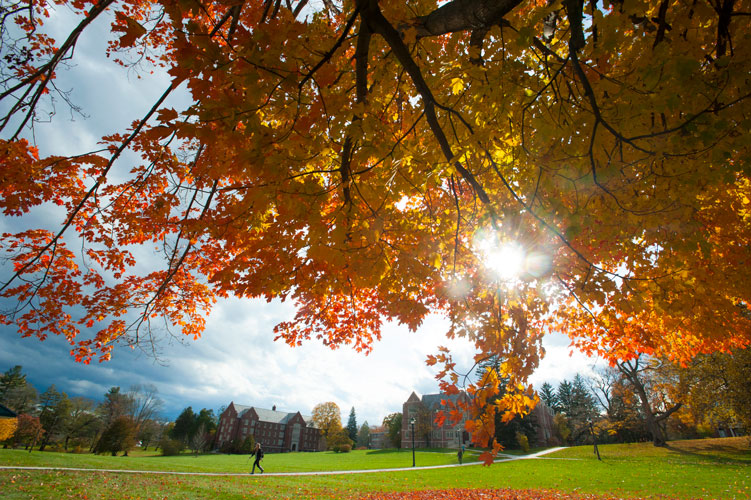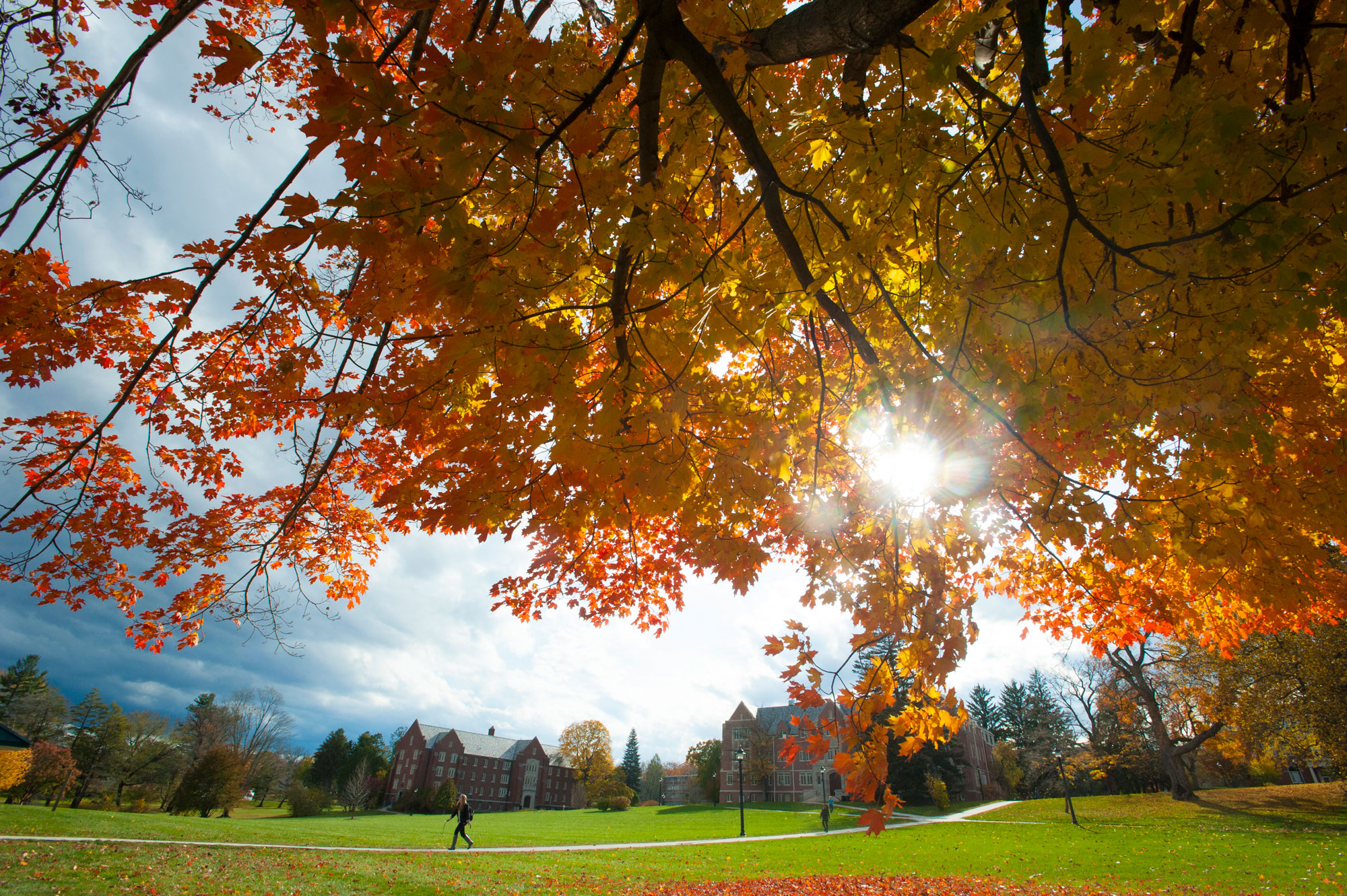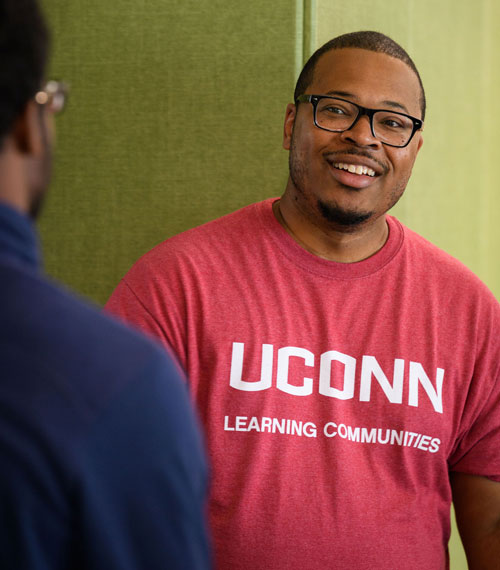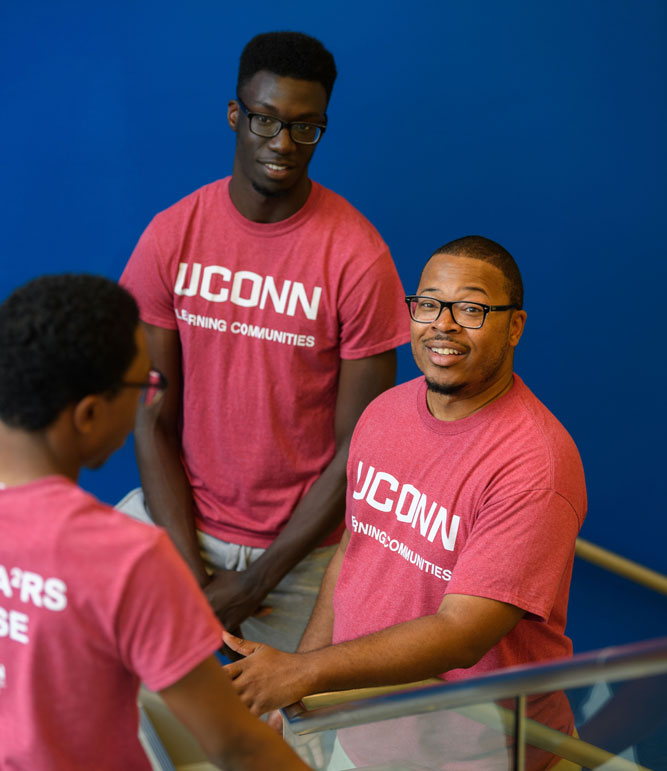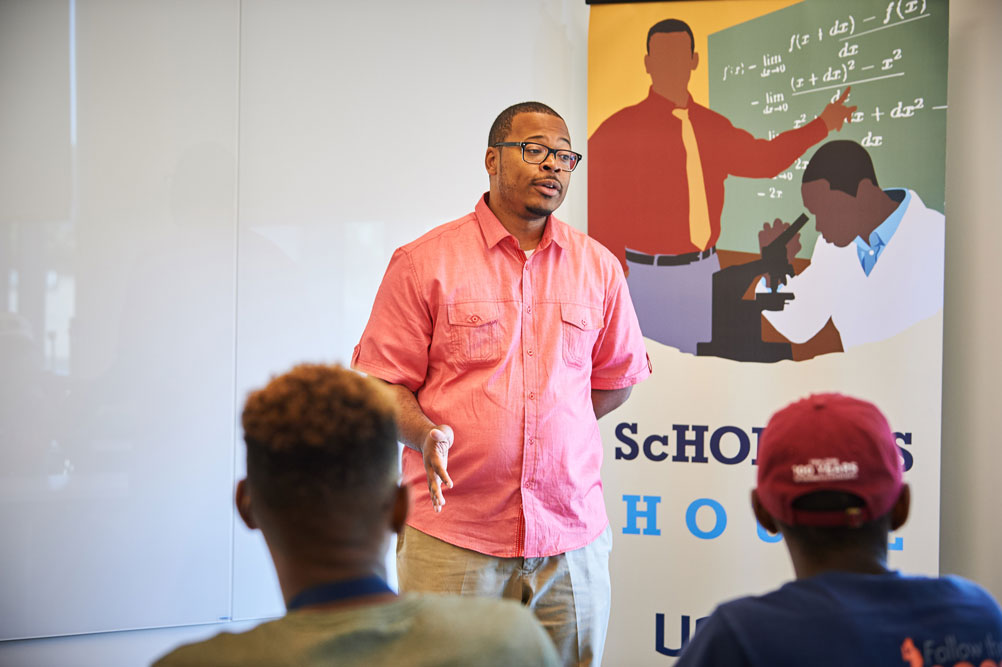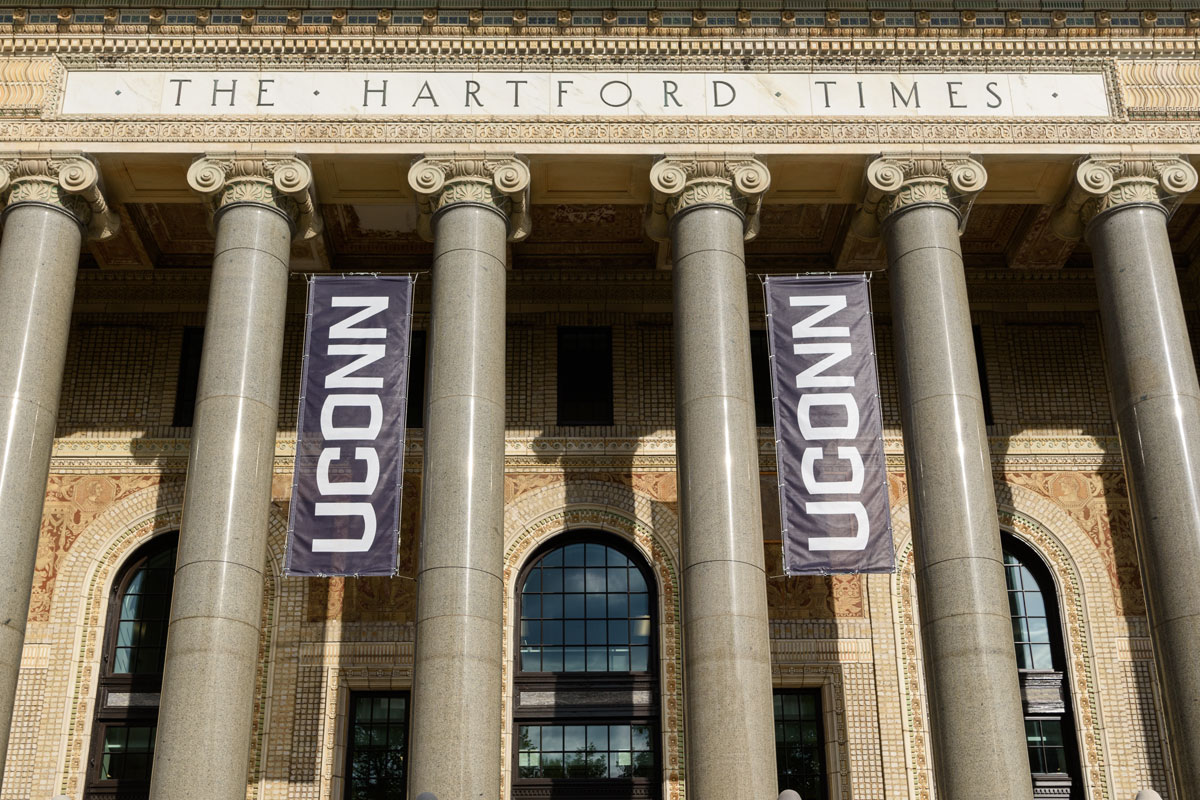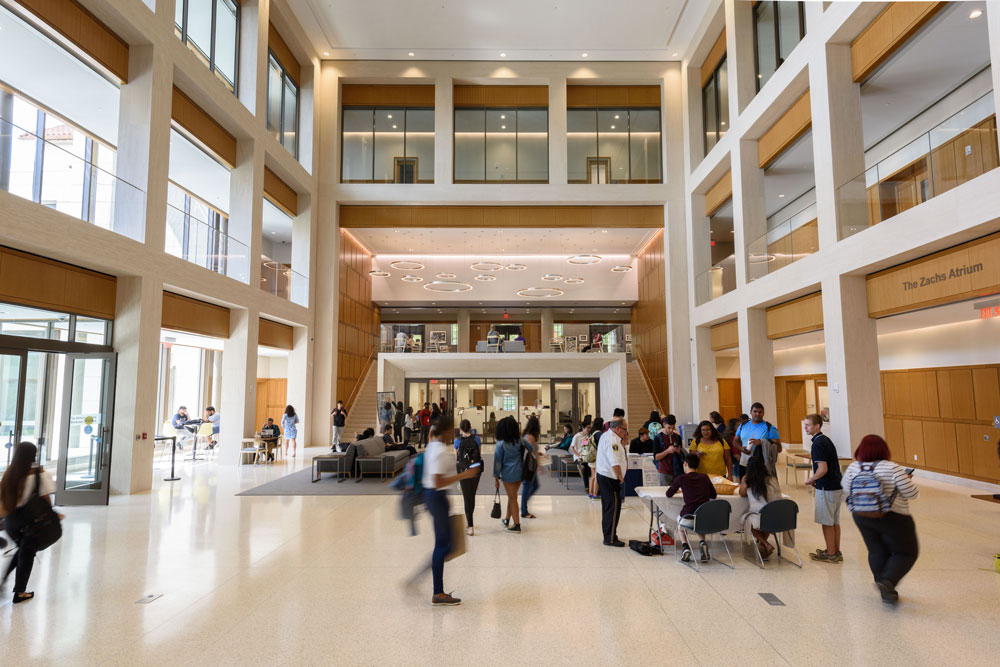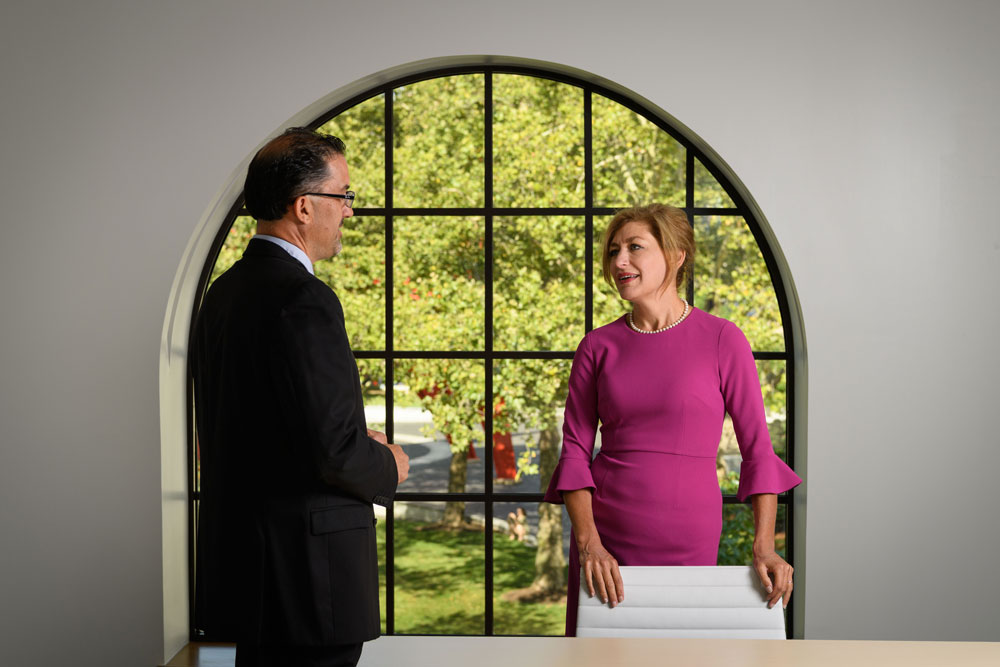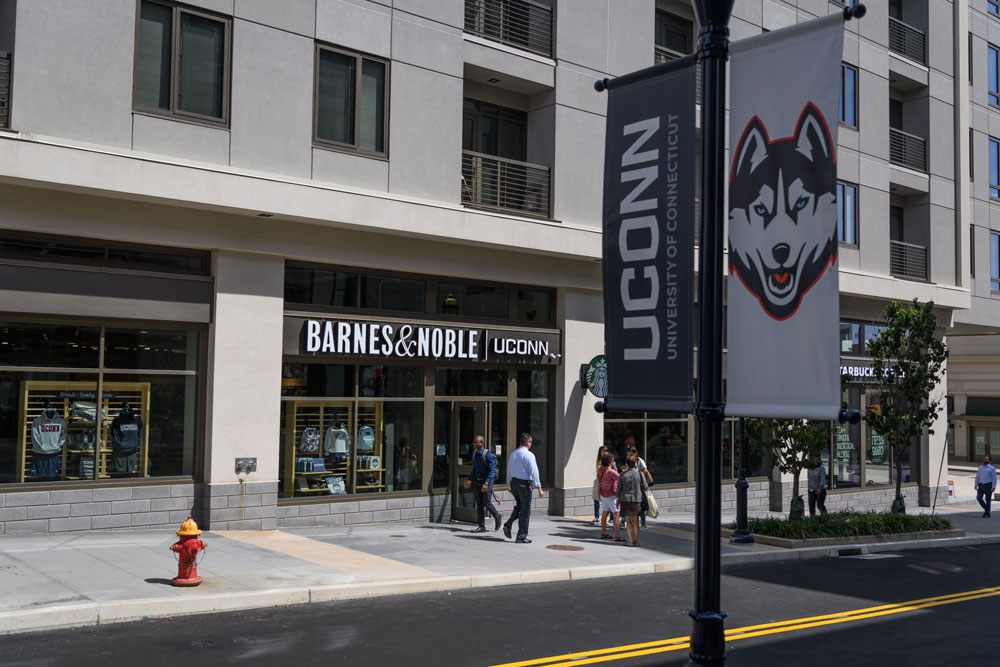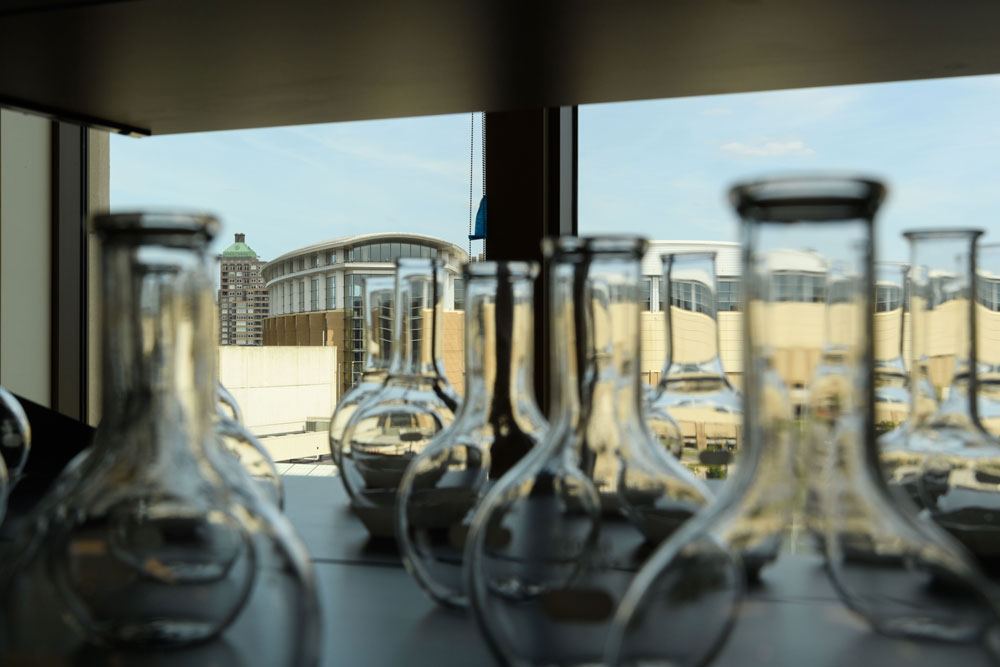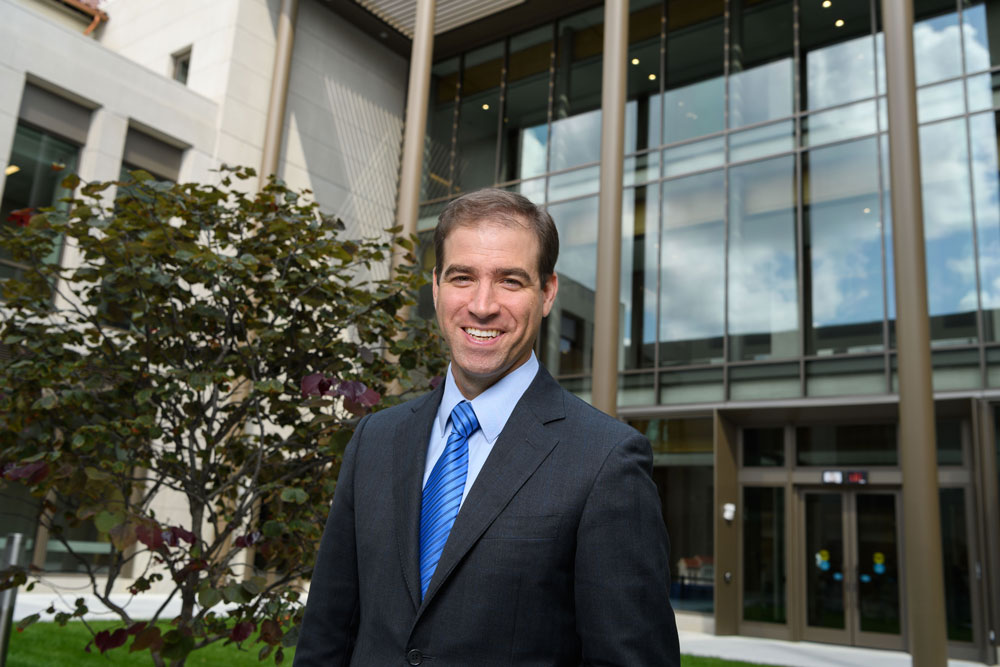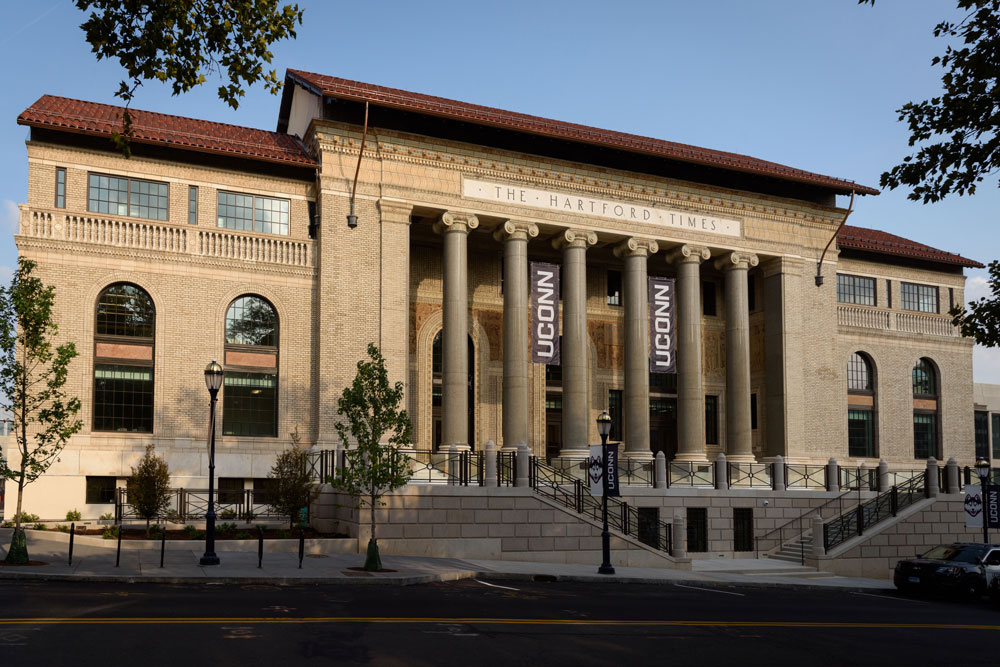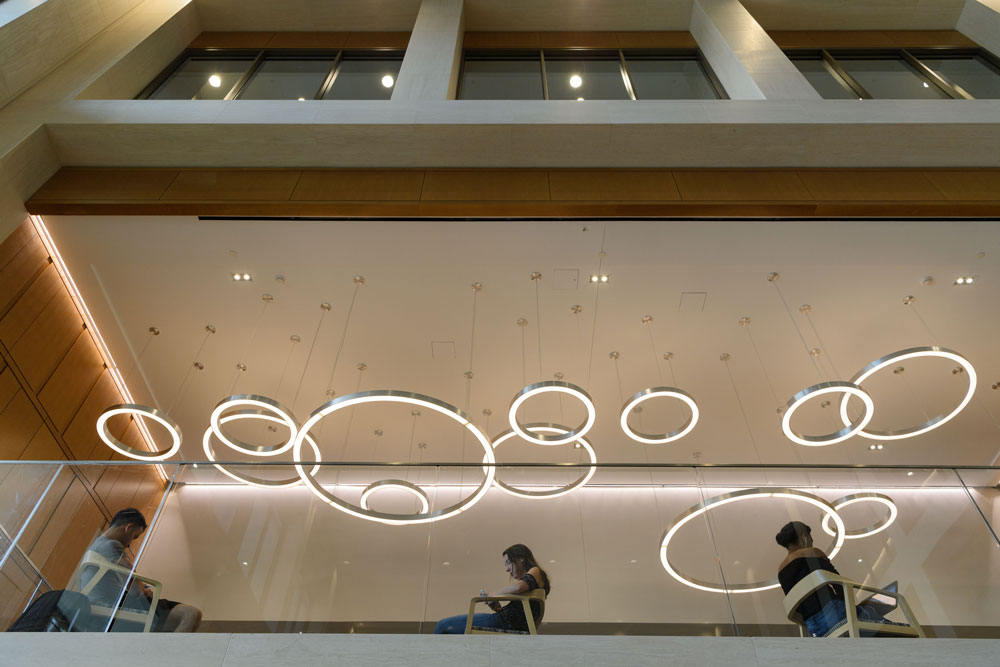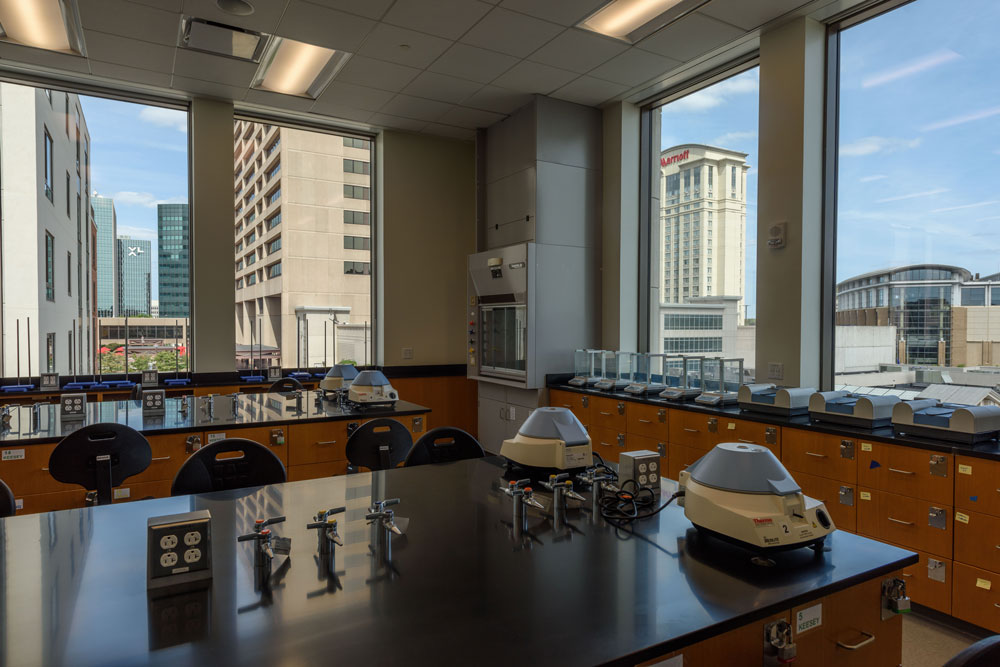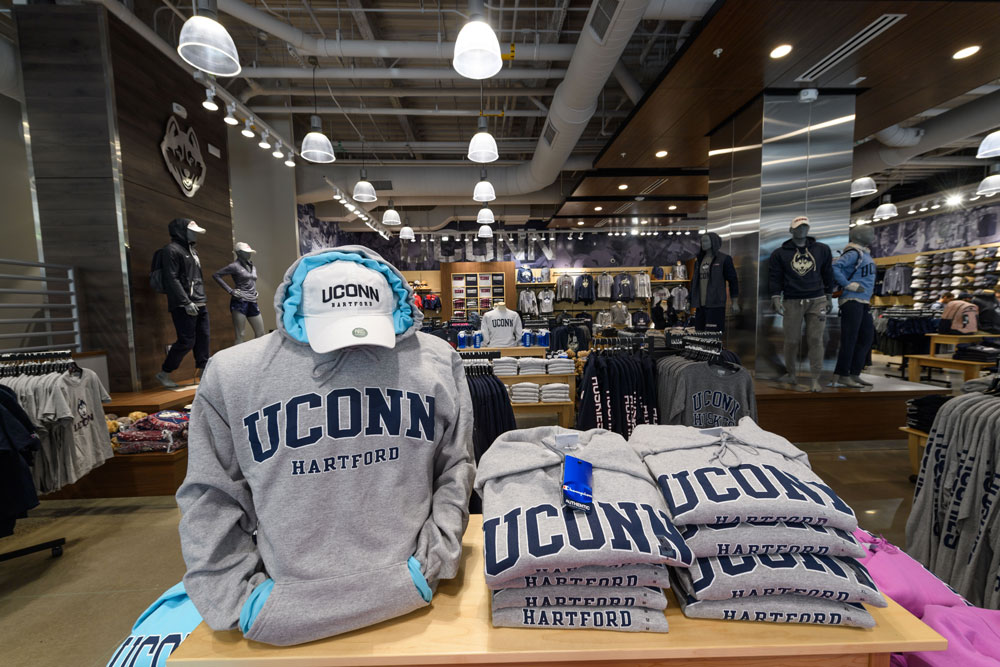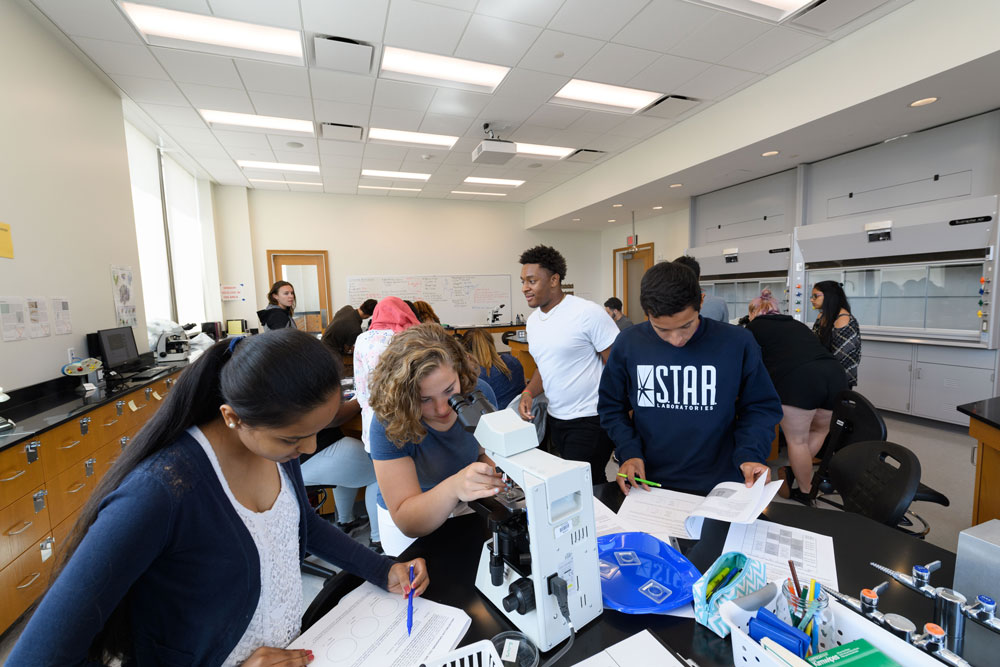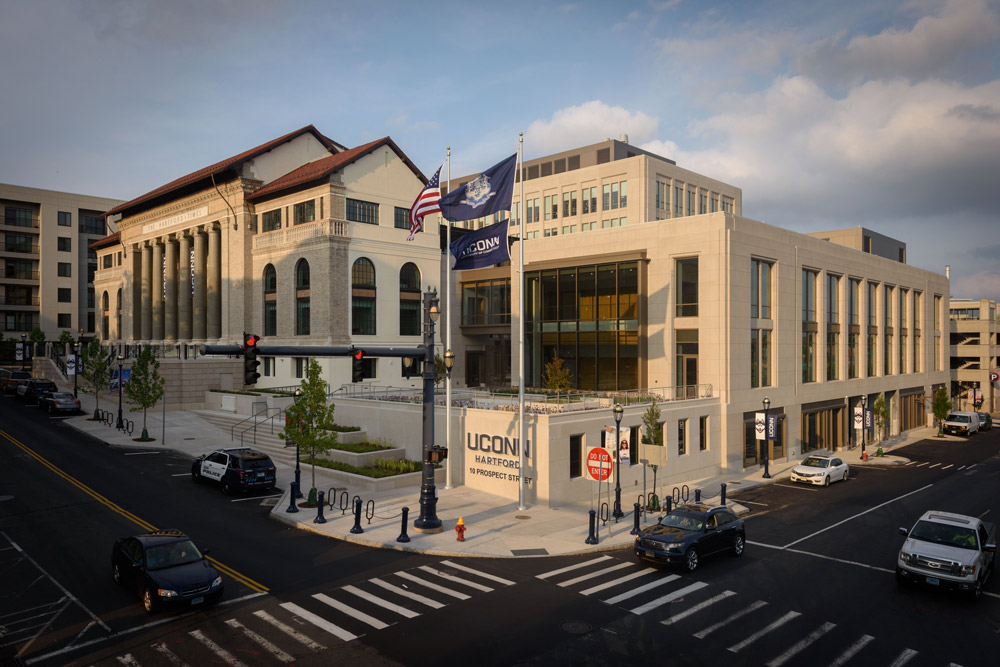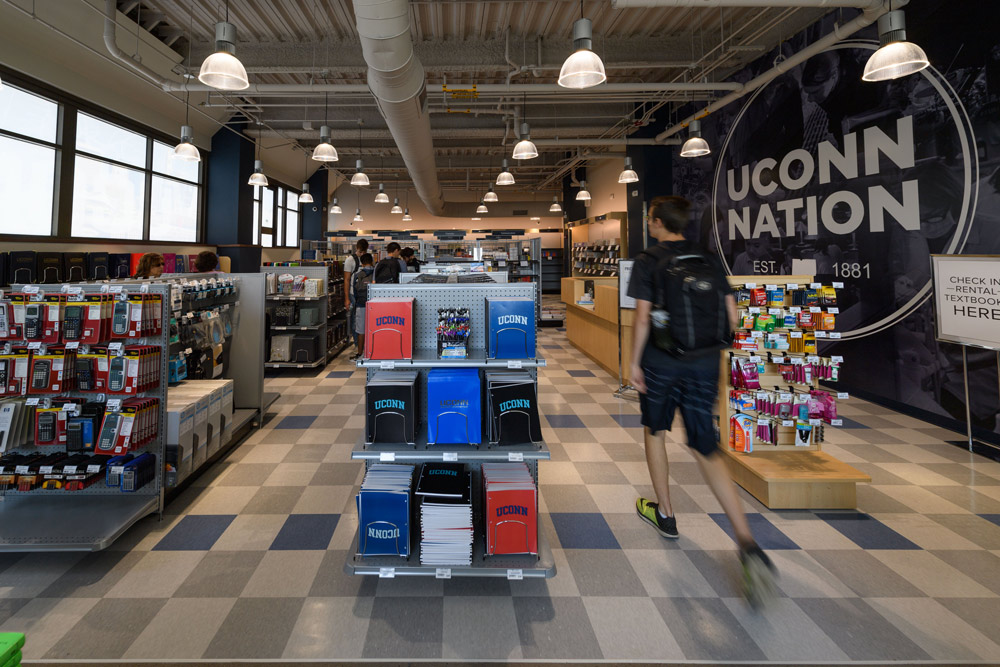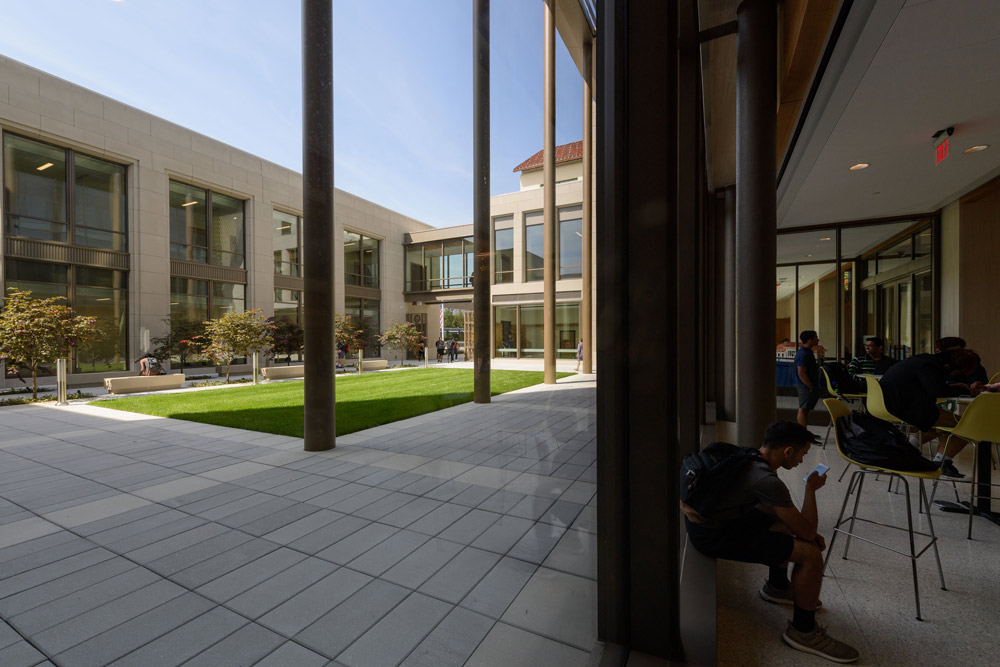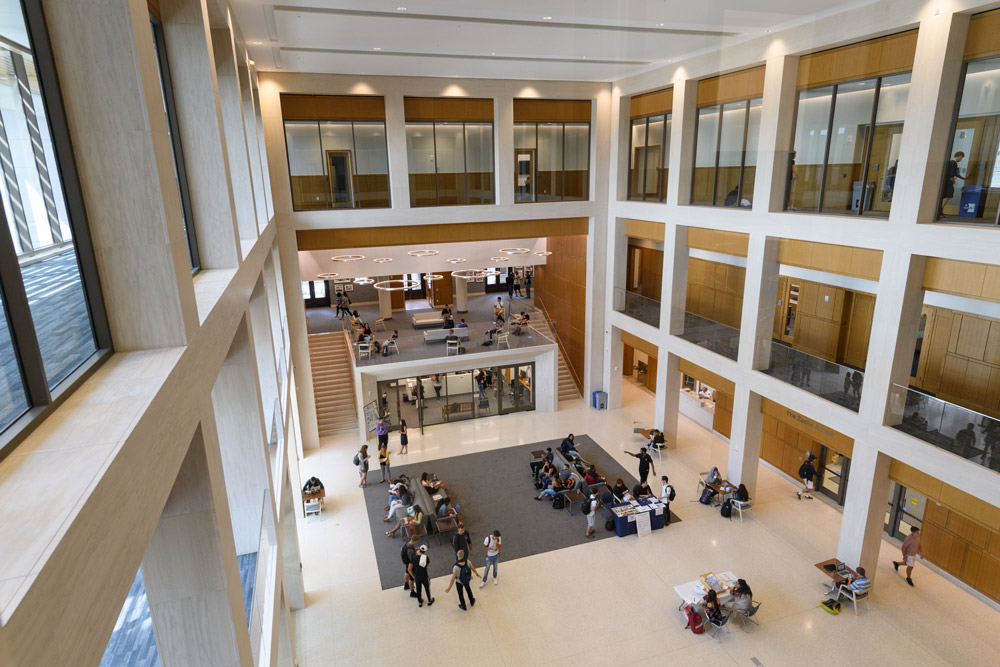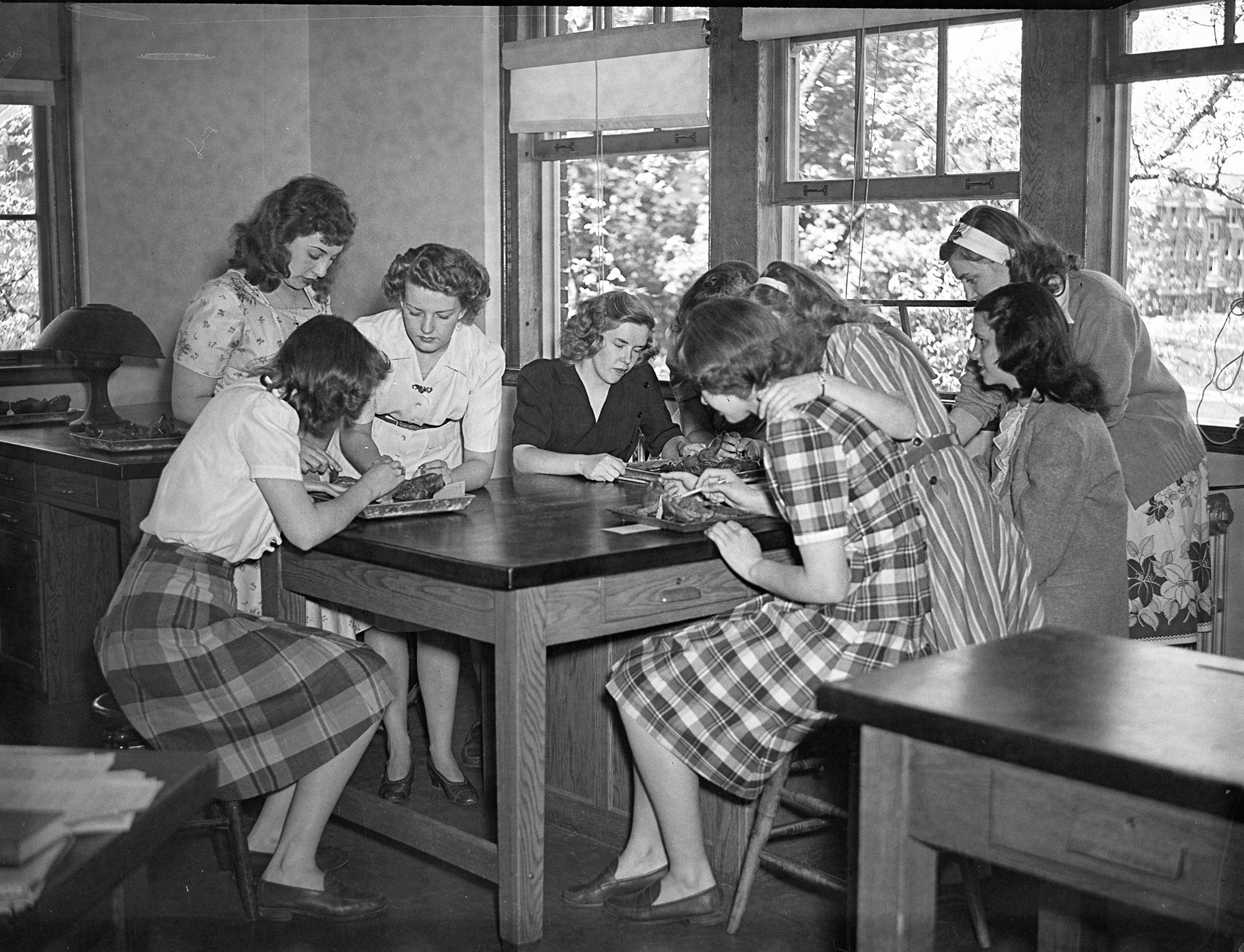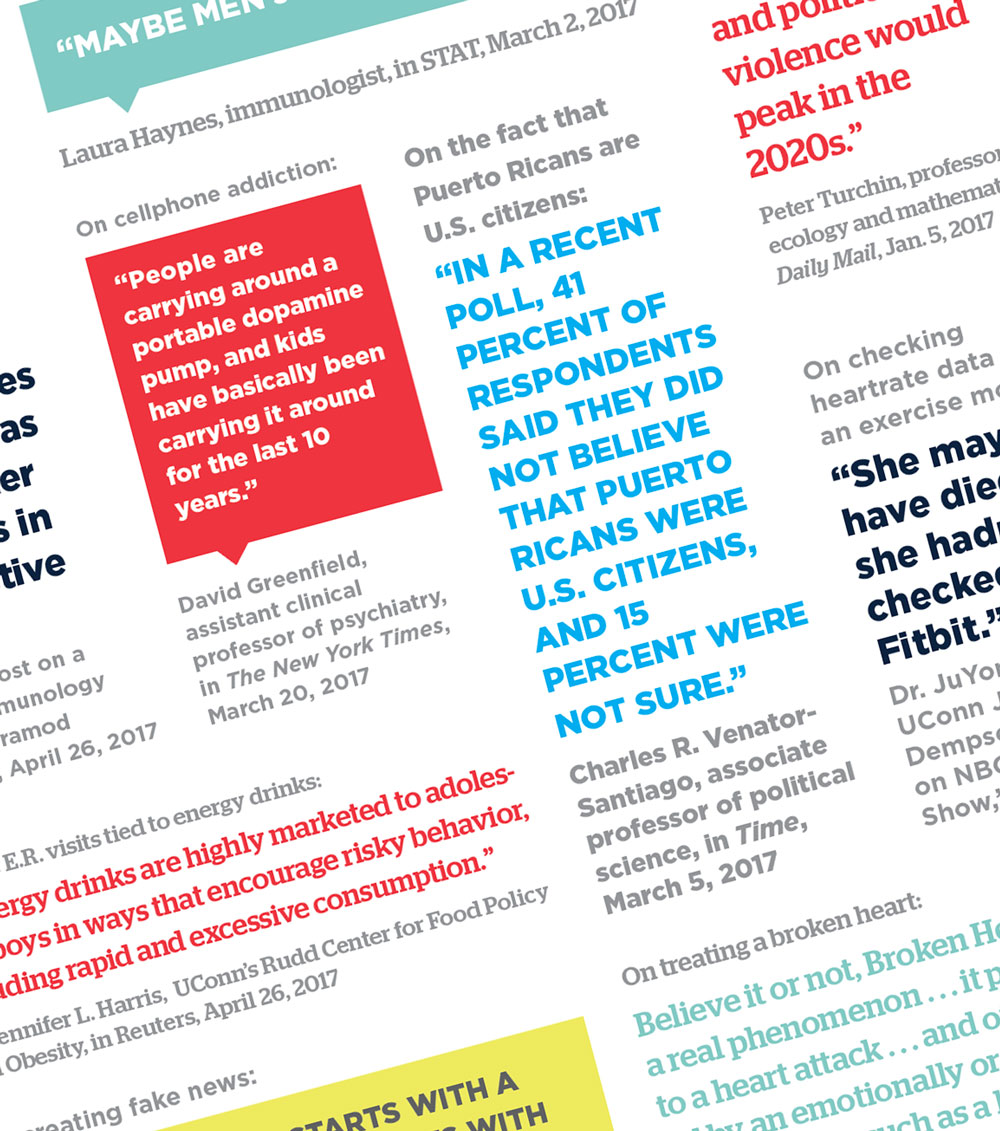Challenge yourself to Tom’s Trivia!
See if you know as much as King of UConn Trivia and University Deputy Spokesperson Tom Breen ’00 (CLAS).
Scroll to the bottom to reveal the answers.
UConn’s school colors of National Flag blue and white were made official in 1952. What were the earliest colors known to represent the institution?
A: Orange and white
B: Red, white, and blue
C: Imperial blue and white
D: Midnight blue and white
The opening of the Downtown Hartford Campus this fall is the first time UConn has had an under- graduate campus in the capital city since 1970. How many previous locations have there been for the University in Hartford?
A: One
B: Three
C: Five
D: Six
UConn’s Winter Weekend ”“ a bright spot during the cold New England months on campus ”“ began in 1979 with jugglers, an ill-advised parachute jump, and a “pajama party beerfest.” Only one activity has survived as a mainstay of campus life, though. What is it?
A: The Senior Scoop
B: A ski trip
C: One-Ton Sundae
D: Saturday basketball game
What non-Halloween costume tradition disappeared from University life after 40 years?
A: UConn’s president dressing once a year as the “Mayor of Storrs”
B: A parade through campus led by someone dressed as the Pied Piper
C: The football team and marching band swapping uniforms after the Spring Game
D: Students dressing as the mascots of Yankee Conference rivals to mock their teams
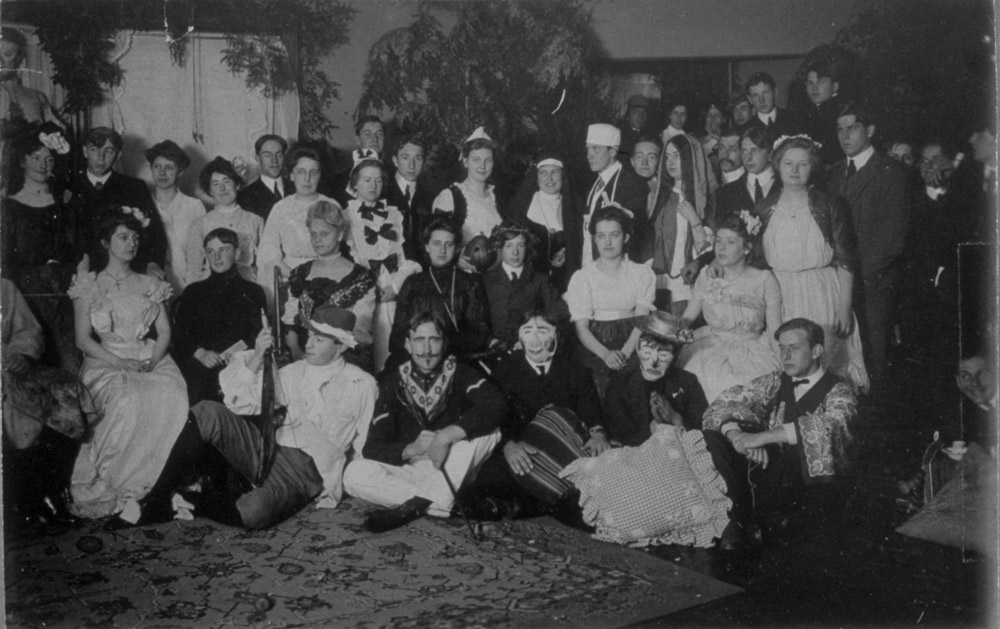
In 1904, some 40 students ”” a quarter of the student body ”” posed in their Halloween garb.
Answers
- C. In the 1890s, UConn colors were white and a very light blue, known as Imperial Blue, which is the earliest known use of colors to represent the institution that would become UConn.
- C. Opening as an extension center on Bellevue Street in 1939, the campus rapidly expanded after World War II, moving first to a location on Woodland Street, and then to Barnard Junior High School before moving to rooms in Hartford Public High School. The last location of the old Hartford campus was the former Goodwin estate on Asylum Avenue.
- C. First scooped out in 1979, the One-Ton Sundae has been one of the most popular traditions at UConn ever since, the scene of hundreds of students eating ice cream outdoors in the dead of winter being one of the unique spectacles of campus life at UConn.
- B. From 1932 to 1972, the highlight of Freshman Week was the nighttime parade through campus led by the head of student government attired as the Pied Piper ”” who would often be thrown into Mirror Lake at the conclusion of the festivities.
